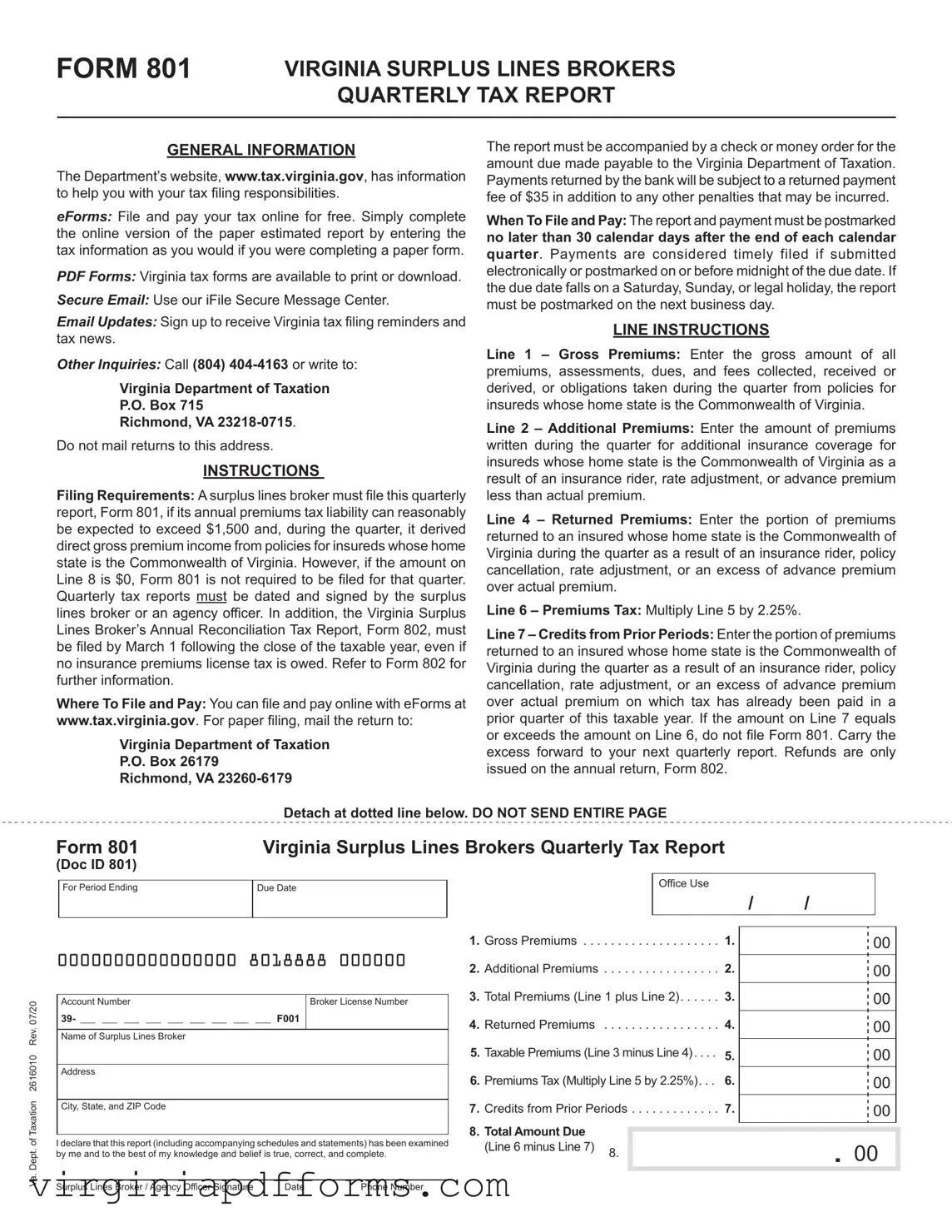Fill in a Valid Virginia 801 Template
The Virginia 801 form is the Quarterly Tax Report that surplus lines brokers must file to report their premium income and tax liabilities. This form is essential for brokers whose annual premiums tax liability is expected to exceed $1,500 and who have earned direct gross premium income from policies for insureds in Virginia. Timely filing and accurate reporting help ensure compliance with state tax regulations.
Access My Document Now
